The poems in Dark Water Songs begin on the margins of islands and ancestors, and fan out, probing love, loss and life’s dilemmas. They expand and deepen the poetic exploration which began with Soutar-Hynes’s earlier collections, mining the reciprocal spaces enabled by the hyphen between Jamaican and Canadian, exploring silences, the weight of memory, and a sense of the sacred. The collection contributes to the body of work by contemporary Canadian writers of Caribbean origin. The perspective is that of a poet/educator and former nun ― a writer who negotiates the world through the lens of islands and continents, landscapes and seas.
“Dark Water Songs is a startlingly good new collection. The overall sense is one of colour, landscape and texture; of the nuances of nature and man’s emotion as something echoing and fleeting, blundering, humanly aching to be one but made clumsy by the mind, by knowledge, by the self-consciousness that condemns us to recognize beauty and synchronicity without ever being able to be more than an uncomfortable part of it all. It is that humanness of difference that makes this collection a wonder.”
—Rachel Manley, author of Drumblair: Memories of a Jamaican Childhood, Slipstream: A Daughter Remembers and Horses in Her Hair: A Granddaughter’s Story
“Soutar-Hynes’s poems are sensuously expressive and conceptual all at once. The texts are shaped like sculptures: with indents and caesuras creating “negative space” and added visual rhythm — layouts consonant with her often vividly pictorial imagery. Underpinning these aesthetic qualities is the sensibility of one who is widely read, intellectually sophisticated, and tuned in to contemporary ideas. Another distinctive Soutar-Hynes attribute is her ability to convey a sense of place, whether close to home, recalled from early life, or travelled to over the oceans. Such local, regional and global scope makes her a post-national as well as a multicultural and postmodernist writer of real distinction.”
—Allan Briesmaster, author of Confluences and Against the Flight of Spring

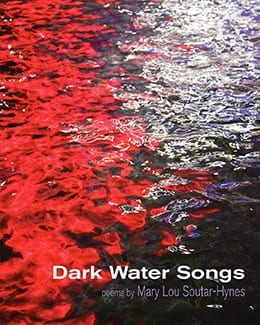
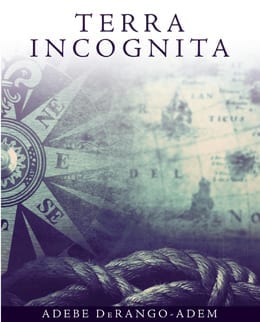
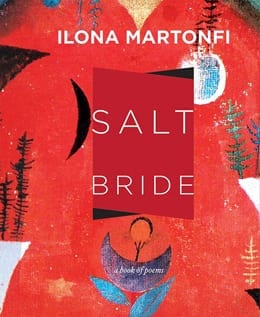
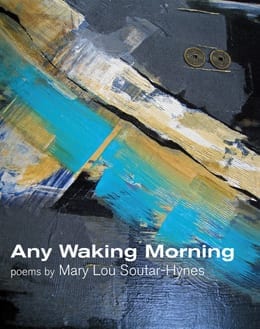
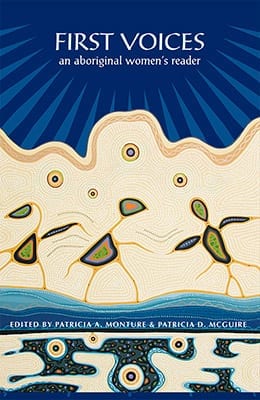
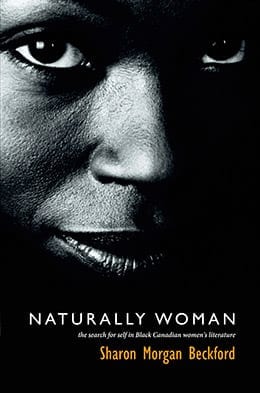

InannaWebmaster –
Review of Mary Lou Soutar-Hynes’ Dark Water Songs in Relation to my Final Project
Beyondaire – September 30, 2016
https://beyondeire.wordpress.com/2016/09/30/review-of-mary-lou-soutar-hynes-dark-water-songs-in-relation-to-my-final-project/
Published in 2013, Dark Water Songs, by Mary Lou Soutar-Hynes, is a compelling collection which explores, through extraordinary imagery, a broad number of topics; from death to the poetry in everyday life, a ‘whale’s back’1 to ‘jokers tumbling’2, Soutar-Hynes effortlessly guides the reader between land, sea and the seasons, using a highly observant speaker, to an enlightening and inspiring effect. This brief review will focus on her observational style, skillful imagery, and the thoughts and ideas the collection evoked from me as both a reader and a poet.
The collection is divided into four parts but opens with a poem which is situated outside these categories. ‘Pinturas ciegas’, meaning ‘blind paintings’ (81) conveys not only, in my opinion one of Dark Water Songs’ most vivid images, but also a solid auditory perception. Soutar-Hynes beautifully describes the ‘Wingbeats echo’3 of the now absent butterflies as ‘time’s exquisite breathing’ (line 6). Here, the giving of life to time hints towards the vitality which exudes from many of the poems in this collection, while also touching on Soutar-Hynes’ ability to take a single fleeting moment, such as some butterflies passing by, and transform it into a sensual experience. ‘Pintura ciegas’ closes with an invitation to ‘pause’'(line 10) and view the words, as elegant as they are at face value, in terms of their underlying meaning. She compares this to feeling ‘brushstrokes’ (11) and ‘their silent probing, beneath the painting’s skin’ (13). Having read Dark Water Songs’ first poem, I could immediately see why Allen Briesmaster comments on Soutar-Hynes’ ‘vividly pictorial imagery’4 so quickly in his blurb summary.
Within a few minutes of acquiring Dark Water Songs from the library, even after having only briefly flicked through and read a few lines at random, I knew it would be useful in aiding the creation of my final project. I found that not only was Soutar-Hynes achieving what I wish to achieve as a poet, in terms of what I have already mentioned she also evoked from me, in the moments she wrote about, a nostalgic feeling. A two part poem delightfully titled ‘Serendipities’, opens with the simple and yet immersive lines: “Close to/ home,/ even a casual walk/ can yield surprises,/ chance sightings/ that tug/ and probe associations-“5.
I almost cannot describe why, but I was immediately transported back to a childhood memory. It was one of those memories which stands out, and always has done, much bolder than the others. I was aged three or four and walked with my sister and father, collecting conkers on a wet, autumn afternoon. The last lines of the poem summarised the joy I felt that day, despite the rain, where the ‘wonderment of wet’(31-32) is revealed. There are many personal reasons that I feel particularly nostalgic towards that memory, and others. Having felt this way reading Soutar-Hynes’ work, I knew not only that it was a theme I wanted to explore in my own collection, but that her refreshingly simple areas of focus, such as a walk ‘Close to/ home’ (1-2), encouraged me to begin my creative process with something equally uncomplicated, on which I could build.
I simply cannot comment enough on the incredible imagery in this collection. But as Briesmaster writes in his blurb review: “Soutar-Hynes’s poems are sensuously expressive and conceptual all at once”6. One poem in which this is obvious is ‘From Dark/ To Dove’ in which the speaker is at a wake and talks to the sister of the woman who has died. The speaker is asked by the sister ‘where poems come from’7 to which the speaker thinks to themselves: “This moment, I wanted/to say, is a poem-/ these tears…” (13-15). The concept of poetry being moments, being time, being emotion, encapsulates the complexity which lies beneath this collection of seemingly simple themes. Soutar-Hynes, in my interpretation, also alludes here to poetry perhaps being a means of comfort. The collection as a whole is undeniably inspiring and intimidating to me as a young poet. I can only hope that I eventually write something as equally vibrant.
Mary Lou Soutar-Hynes,’Maybe’ in Dark Water Songs, (Toronto: Inanna Publications and Education Inc., 2013), p.12, line 4. All subsequent references to this edition.
2. ‘Palpable Delineations’, p.76, line 8.
3. ‘Pinturas ciegas’, p.1.
4. Cited from the blurb of edition referenced.
5. ‘Serendipities’, p. 29, lines 1-7.
6. Cited from the blurb of edition referenced.
7. ‘From Dark/ To Dove’. p.44, line 8.
InannaWebmaster –
Review: Dark Water Songs by Mary Lou Soutar-Hynes
Room Magazine – November 2014
reviewed by Emily Milliken
http://www.roommagazine.com/reviews/review-dark-water-songs-mary-lou-soutar-hynes
The poems in Dark Water Songs touch on the political, the natural, the concrete, and the abstract. From the streets of Toronto to tropical islands, “From Perth to Edinburgh by Rail” (21) Soutar-Hynes takes us through urban and rural landscapes following the “crimson certainty” (61) of her heart’s inclinations.
The collection is divided into four sections: “In the Manner of Tides,” “Close to Home,” “Slippery,” and “Other Gravities.” Not surprisingly, water—the sea, the tides, the river, the lake—figures prominently in the work, as does the stuff of water—islands, salt, sand, and lighthouses. This theme runs so strongly through the first two sections that even a poem like “Implicated” (16), which makes no mention of water and is political in tone, brought to mind an aging leader of a small island nation.
This theme loses strength by the sections “Slippery” and “Other Gravities.” Sailboats and anchors still pop up, but as a reader, I was becoming more aware of and more interested in the glimpses of the poet’s life seen almost as “clusters of intimacy” (75) in the poems.
Narratives are partially told but mostly obscured. “Discernment” (73) is one example, where Soutar-Hynes uses landing a plane in fog as a metaphor for perspective. Near the end of the piece, a third person appears in parenthesis: “Beautiful, she said of your heart’s / steady beat: I saved you / a picture.” This dialogue changes the “pockets of turbulence preferable to disaster” earlier in the poem to a comment on this relationship. But that’s all we really get of it.
“The Weight of Storms” (40) beautifully depicts the frozen existence of deep winter in Ontario: “No birds at the feeder / no squirrels foraging / through lilacs frozen antlers.” The poet uses this environment as a metaphor for the tone set by argument between intimates. “We play our separate / hands from separate rooms—/ lost solitudes—awaiting ploughs / to pry us free.” These snippets appear throughout the book, scattered between abstract meditations like “Perhaps” (52) and observations of the natural and constructed world.
Soutar-Hynes’s use of space, line-breaks, and stanza breaks lends many poems in the collection not only the poet’s voice—I can hear her pauses, hear how she would likely read aloud—but a concrete quality. I truly hope that the island-like shapes formed by poems like “Along Rosedale Valley Road” (56) depict archipelagos found in some old atlas.
As I read Dark Water Songs, I was increasingly aware of the poet’s consciousness, or the “brisk salt of / [her] waking thought” (31) and the effect left me curious about her, her work, and her life.